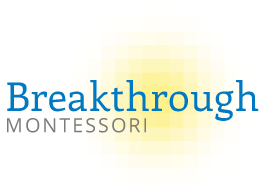Montessori is a highly-structured and student-centered approach to education.
In a Montessori classroom, students receive lessons one-on-one or in small groups with their teachers.
They explore different skills and concepts by working with hands-on materials that respond to their developmental needs. These materials are sequenced progressively and enable students to independently move through the curriculum at their own pace.
Core Components of Montessori Education
Student-centered learning:
Students have the time and space to work independently with hands-on materials.
Prepared environments:
Montessori classrooms are designed to support each child's development. Materials engage all the senses and allow students to learn by making their own discoveries.
Multi-age classrooms:
Montessori classrooms host students in three year cycles. A child begins as a member of the youngest cohort in the room, benefitting from the example set by older children. Over the course of three years, children build trusting relationships with teachers and eventually become leaders for younger peers.
Observation:
Montessori instructors are trained to pay close attention to the needs of each child in their classroom, enabling them to provide differentiated instruction.


